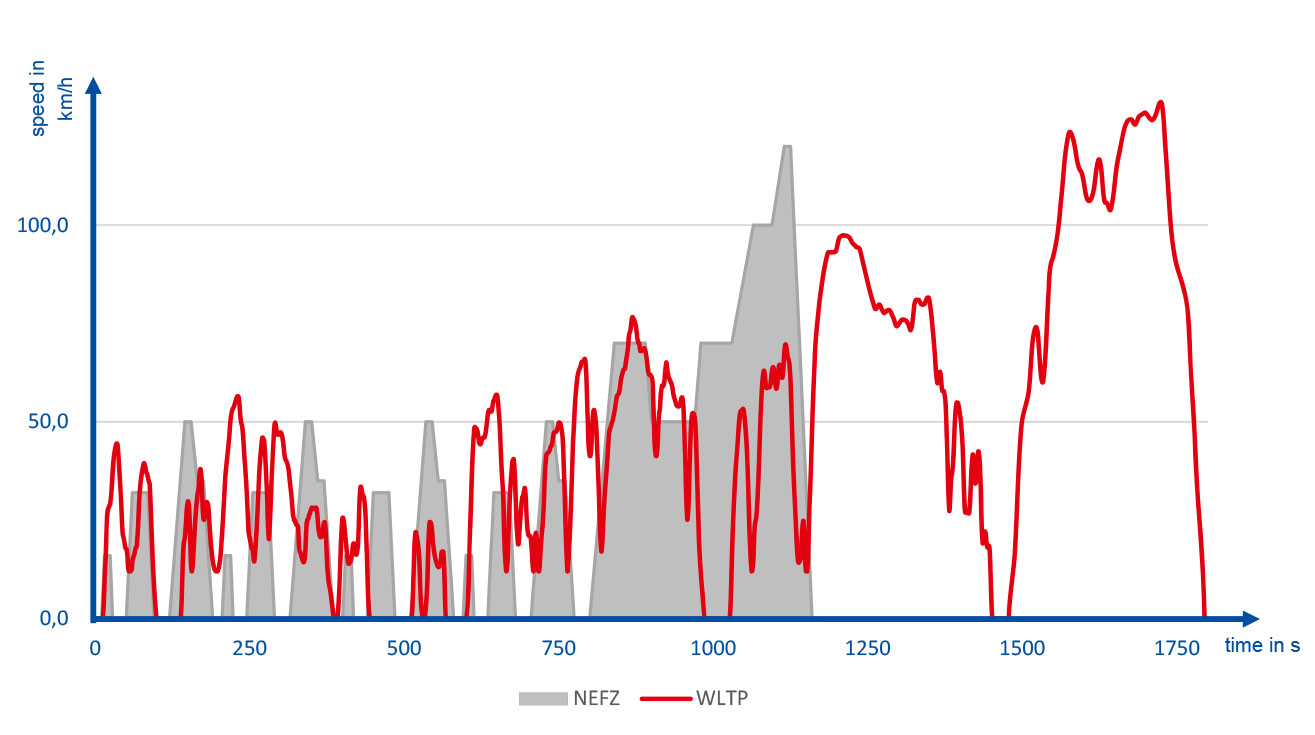The new test procedure, WLTP
Standardised test methods determine the fuel consumption and CO2 emissions of motor vehicles, as well as their pollutant emissions. Since 1 September 2017, the new Worldwide Harmonized Light-Duty Vehicles Test Procedure (WLTP) has been in force for the type approval of new passenger cars in the EU. This is the successor to the former New European Driving Cycle (NEDC) test procedure, which has been in place since 1992.
Why is there a new test procedure?

Information on fuel consumption must be determined by an objective and reproducible test method which reflects actual driving behaviour under real conditions on the road. The NEDC test no longer meets this requirement, which in some cases can lead to large deviations between estimated and actual fuel consumption. The new WLTP test procedure, on the other hand, is based on real driving data from Europe, the USA and Asia, and is intended to represent reality far better.

As the WLTP demands more power for more realistic driving, the estimated fuel consumption and therefore also the CO2 emissions increase by about 20-30% compared to the NEDC. This has also an impact on the vehicle tax, which is calculated on the basis of CO2 emissions, as well as potential penalties for car manufacturers who are unable to comply with the CO2 limit for their vehicles.
How does the WLTP influence the lubricant?
The new test procedure increases the pressure on the entire automotive industry to reduce CO2 emissions by taking appropriate measures. The use of suitable lubricants is also an important contributing factor. State-of-the-art engine oils such as our TITAN GT1 LONGLIFE IV SAE 0W-20 already offer potential savings of more than 4% compared to standard products, and the potential is even greater. In future, modern high-performance lubricants will continue to make a significant contribution to achieving CO2 targets.
WHAT DISTINGUISHES WLTP FROM NEDC?
SPECIFICALLY, THIS MEANS:
- More realistic driving behaviour
- Longer test cycle (23.25 km vs. 11 km)
- Greater number and range of driving situations
- Higher average and maximum speed (131 vs. 120 km/h)
- More dynamic acceleration and braking
- Consideration of special equipment (e.g. air conditioning)
- Higher drive power (64 vs. 46 PS max.)
- Less downtime (12% vs. 25%)
- More realistic ambient temperatures
